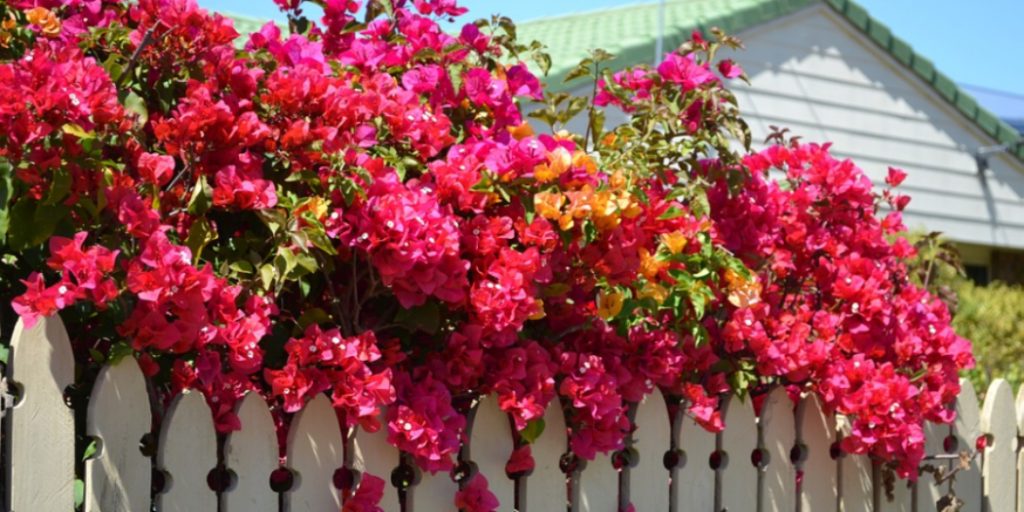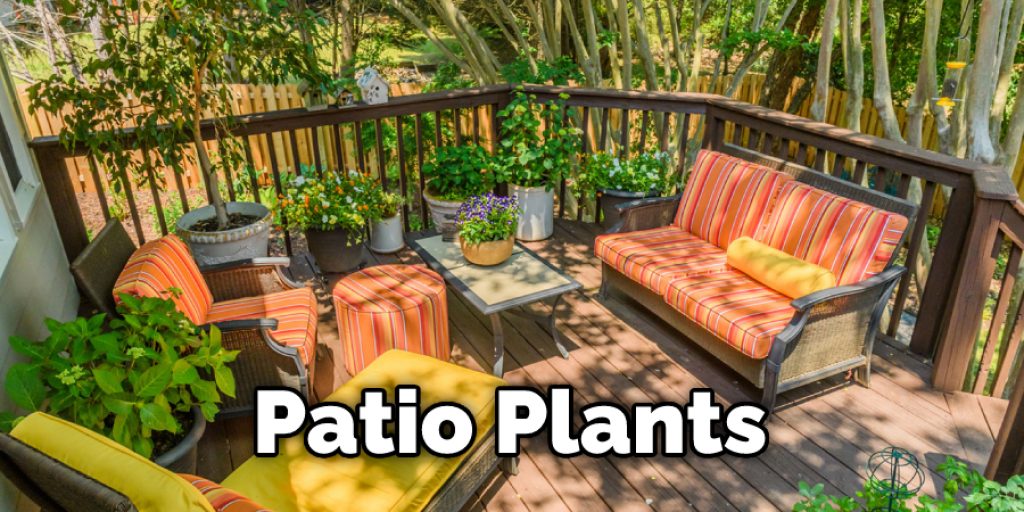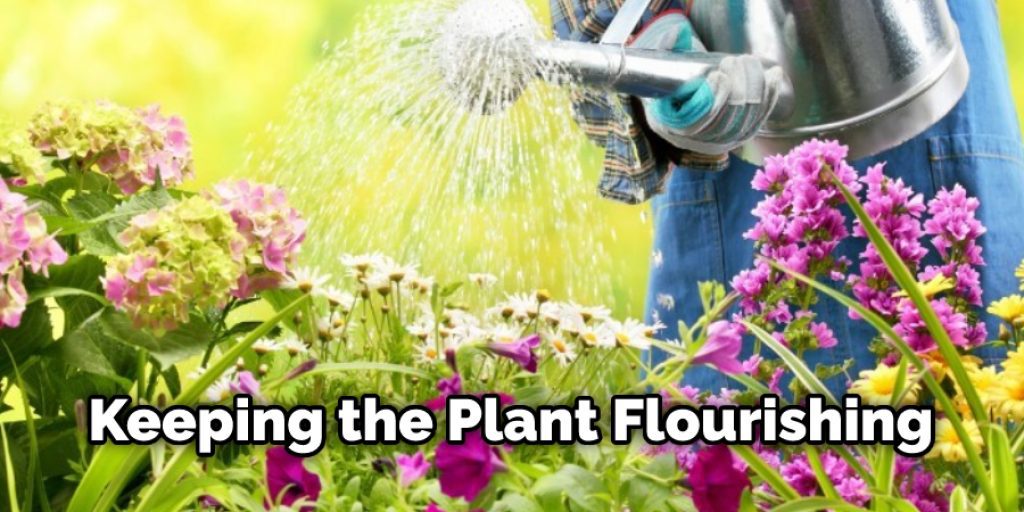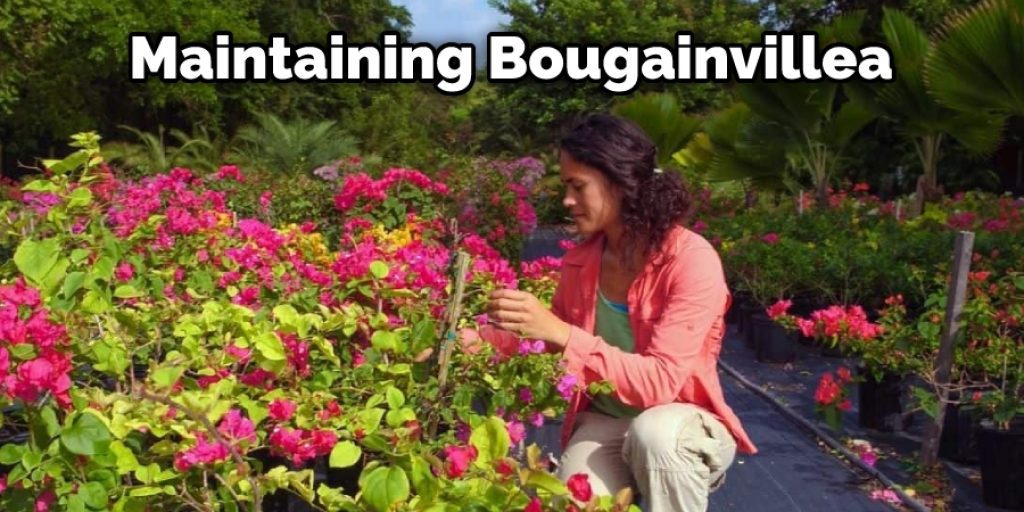The most common way to train a bougainvillea is by tying it to a chain-link fence and letting the vine grow up and over the top of the fence. This method can be seen all around Southern California, including San Diego, with mild winters with little or no frost. In this method, the bougainvillea is tied to the fence and allowed to grow up over the top of the fence.

If you live in an area with cold winters, this is not recommended as your plant will die back every year when it goes dormant for winter. Bougainvilleas are my favorite plants with brightly colored flowers and long vines that make them perfect for growing on fences or trellises. The flowers on this plant are some of the brightest I have ever seen. The blooms come in a variety of colors and can last for weeks or even months at a time.
They’re also very hardy and drought tolerant once they establish themselves properly but require lots of suns, making them perfect for hotter regions of the United States. So, this article is for you. You will learn how to train bougainvillea on a fence with just one simple trick! Best Bougainvillea For Fence Training Before you start training bougainvillea on a fence, you need to choose the right one for the job.
Step to Follow on How to Train Bougainvillea on a Fence
Step One: Determine
First, you need to decide if your bougainvillea is a climber or a patio plant. Short, bushy types can be used as patio plants and will do best if provided with extra support. If the growing tips are continually pinched back, they will grow shorter and bushier. More extended growths will produce more flowers and take up less space. If you don’t have much room for a climbing bougainvillea, you can still enjoy the flowers on your patio.

If they are to be grown as climbers, trellis or arbor will need to be constructed and attached to the house. The bougainvillea plant is not particular about what type of structural support is provided, as long as there is something that it can wrap and cling on.
Step Two: Construction
Construction needs to be planned ahead of time, preferably before the plant has been bought. First, take into consideration who will be maintaining the trellis. If children are around, construct a sturdy arbor or wall that can support all future growths and keep them safe. For a more permanent installation, consider installing the trellis into a concrete footer. This will provide stability and prevent movement. For best results, have a contractor or experienced carpenter do this work. They will know how to properly support the trellis and ensure its longevity.
Next, plan how to handle the bougainvillea’s water supply. Bougainvillea plants do best when kept slightly on the dry side. If they are in a very windy area, however, you will need to give them more water since they lose moisture quickly. The most important aspect of construction is to remember that bougainvillea likes its roots cool and moist.
Step Three: Vigilance
Vigilance is the key to the success of training bougainvillea. Daily care and maintenance will be needed to keep the plant flourishing. Bougainvillea should not be allowed to dry out too much; watering needs vary due to rain, wind, and sun levels. The most important thing is to water regularly with cool water.

If the plant is getting too much direct sunlight, the tips of the leaves may begin to turn brown. If this happens, move it or put up an umbrella for shade. Too much water can cause flowers to fall off; ensure there are adequate drainage holes in containers and pay attention to any standing water that might remain.
Step Four: Pruning
Bougainvillea needs to be pruned regularly. The branches mustn’t get too long; otherwise, they will become weak and break off. Flower buds also need to be pinched back. Bougainvillea plants bloom best when new growth is stimulated.
Pinching back the flowers stimulates growth at the next leaves and will encourage more flowers to form. If the plant is pinched back hard enough, it will stop flowering for about a month. If you see new growth at the tips beginning to brown, cut this off immediately and give less water until the plant recovers.
Step Five: Repotting
Bougainvillea plants do not grow in soil. However, their roots need to be in several inches of loose material. Loam that is high in humus offers the best growing conditions for bougainvillea plants. If you are repotting a young plant, use a well-draining potting mix with one part loam and two parts coarse sand.
When repotting a mature plant, use a loam-based compost with perlite added. Bougainvillea plants require a minimum of six hours of sunlight per day and should be kept where they can get at least four to five hours of full sun each day. Bougainvillea plants grow best when the temperature is kept at between 18 degrees Celsius and the low 30s.
Step Six: Training
Bougainvillea plants can be trained to grow on almost any size trellis or arbor; however, they need an immediate support system for them to fasten onto. The most common method of training bougainvillea plants is tying twine around the branches and attaching it to support.
If you want to use other means, such as wire or string, make sure that you consider how much weight each branch can hold before deciding if tying is appropriate for your needs. This will help in how to train bougainvillea on a fence.
You Can Check It Out to: Build a Fence Around a Tree
Step Seven: Maintaining
Maintaining bougainvillea is relatively easy. Every two weeks, fill the plant with fresh water. Water should be cool for newly planted plants and warm for mature plants. Watering needs will increase as temperatures rise in warmer weather. When watering, it is important to use a fine spray, so the leaves are not over-soaked.
In the fall, leaf drops can occur. This is normal and should be left on the ground to form a natural mulch for new growth in the spring. During times of excessive heat or humidity, mildew or fungal disease may affect bougainvillea plants. If this occurs, use a whitewash solution made up of one part lime to nine parts water.

Remember, bougainvillea is not an indoor plant; it requires sun and good drainage. As spring approaches, the plants will begin to grow larger with rising temperatures. You can fertilize them in early spring or late summer by applying a complete fertilizer that contains nitrogen, phosphorus, potassium, magnesium, and calcium.
You can check it to Remove Vines From Chain Link Fence.
Conclusion
One of the most popular ways to train a Bougainvillea vine is by wrapping it around a fence or trellis and tying it in place. This allows the plant to grow vertically while still allowing you to walk along the ground below, giving your property privacy from passersby.
However, if there’s no existing structure that can support this type of training technique, you’ll want to consider using stakes instead. The conclusion paragraph is informative and provides information on how to train bougainvillea on a fence.
Check it out also – How to Tighten a Fence With a Come Along.








